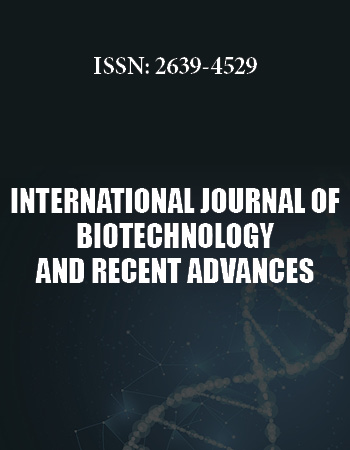International Biotechnology and Research Conference
April 25-27, 2018 Rome, Italy
Novel Antibacterial and Anti-Fungal Agent from Eicchornia Crassipes
St. Markʼs Sec Public school, India
Introduction
Bacterial and fungal infection in humans and plants is an undiscriminating concern to countries worldwide. Large number of it occurs in developing countries with poor economic condition.Eichhornia crassipes, also known as water hyacinth in English, is a floating hydrophytic plant that is notorious for its invasive ability. Due to its prolificness, the plant constantly and quickly causes eutrophication and retardation of the flow of the water it lives in. This results in the need of constant removal of this plant by the people.This research has led to the discovery of using the abundantly found Eichhornia crassipes, as a cheap yet effective source of antibacterial and antifungal agent.Method and Experiment Design
The experiment was conducted in two sets, each set is divided into two parts and each part was subdivided into three elements of different microbes.
SET 1, Part 1
1. The ethanol extract of Eichhornia crassipes is first purified through centrifugation and pasteurisation, and then diluted into 3 different concentrations; 75%, 50% and 25%. In three trials, each of the three Eichhornia crassipes extract concentrations is tested against the three bacterias: Staphylococcus aureus, Streptococcus sobrinus and Escherichia coli, in vitro, by the cylinder plate assay method.
2. Water is used as negative control and ampicillin is used as positive control and comparison, being a representative of conventional antibacterial agents.
3. The size of zone of inhibition produced after incubation will be the measure of the antibacterial effect of the extract.
SET 1, Part 2
1. The ethanol extract of Eichhornia crassipes is first purified through centrifugation and pasteurisation, and then diluted into 3 different concentrations; 75%, 50% and 25%. In three trials, each of the three Eichhornia crassipes extract concentrations is tested against the two fungi: Magnaporthe grisea, Fusarium oxysporum and Aspergillus niger, in vitro, by the cylinder plate assay method.
2. Water is used as negative control and fluconazole is used as positive control and comparison, being a representative of conventional Anti fungal agents.
3. The size of zone of inhibition produced after incubation will be the measure of the Anti fungal effect of the extract.
SET 2, Part 1
A second set of experiment is conducted to test whether the extract is bacteriostatic or bactericidal. The second experiment involves:
1. The transfer of the inhibition zone liquid into a new nutrient media.
2. Presence of bacteria on the new media after 24 hours incubation will determine the type of the antibacterial activity.
SET 2, Part 2
A second set of experiment is conducted to test whether the extract is fungistatic or fungicidal. The second experiment involves:
1. The transfer of the inhibition zone liquid into a new nutrient media.
2. Presence of fungus on the new media after 24 hours incubation will determine the type of the antibacterial activity.
Result and Analysis
SET 1, Part 1
The negative control shows no inhibition effect, indicated by the absence of inhibition zone. The highest inhibition effect is produced by the 75% concentration,. The smallest inhibition effect is produced by the 25% concentration. The Ampicillin produces higher inhibition effect than the extracts.
SET 1, Part 2
The negative control shows no inhibition effect, indicated by the absence of inhibition zone. The highest inhibition effect is produced by the 75% concentration,. The smallest inhibition effect is produced by the 25% concentration.
SET 2, Part 1
Presence of bacteria in the new nutrient media of the experiment indicates that the extract is bacteriostatic.
SET 2, Part 2
Absence of fungi in the new nutrient media of the experiment indicates that the extract is Fungicidal.
Three new molecules were derived from the extracts using Beta lactamase test, lanosterol tests and various other tests.
Conclusion:
The antibacterial property of Eichhornia crassipes is due to the presence of two bioactive chemicals (derived); flavonoid and alkaloid.
The Anti fungal property of Eichhornia crassipes is due to the presence of bioactive chemicals (derived) similar to fluconazole. Eichhornia crassipes extract possesses antibacterial and Anti fungal properties, and is bacteriostatic and fungicidal respectively. Therefore, Eichhornia crassipes is a good and cheaper substitute of antibacterial due to its easy accessibility and abundance.
Biography:
Bharat Kwatra is a Student of High school in India, but very keen and enthusiastic about microbes and research related to biochemistry, which make him different from others. He is an active Member of American Microbial society, Indian microbial society, European Research trade and development society and World Association for Scientific Research and Technical Innovation at very young age. He is very passionate about his research which encourages him to look forward for gaining knowledge. From the age of 15 years, he is involved in doing research on various health issues. He received first prize in international conference, 2017 and Won Youth research forum at Beneficial microbes, USA . He is also being awarded as Youngest Researcher in his state. He has published Three international journals and have seven patents. He is being recently working on Single cell protein with Department of microbiology at his school.


